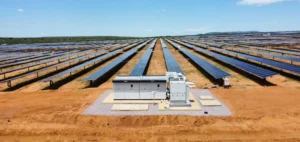The Glorit solar project, led by Lodestone Energy, obtained its construction authorization after an in-depth deliberation by the environmental assessment commission. Located in the Rodney district, north of Auckland, the site will cover more than 190 hectares and be equipped with over 250,000 photovoltaic panels. The infrastructure will also include transformer stations, access roads, and energy storage systems to stabilize output on the local grid.
A strategic project for regional energy capacity
Approval of the Glorit Solar Scheme fits into the national strategy to diversify energy sources pursued by New Zealand authorities. The site will help strengthen security of supply in the Auckland region, where electricity demand is growing rapidly. According to the decision report, visual impact and effects on agricultural soils were deemed “moderate and manageable” in light of the expected benefits.
The approval conditions require Lodestone Energy to implement a strict environmental management plan, including biodiversity protection, erosion control, and progressive restoration of vegetative cover. Authorities also required mitigation measures for sensitive areas near Kaipara Harbour, particularly regarding catchments and aquatic fauna.
Economic conditions and monitoring
The project represents an investment estimated at more than NZD 200 million. Lodestone Energy must ensure monitoring of socio-economic impact on local communities and guarantee secure access to neighboring agricultural land. Construction and maintenance phases will mobilize around 200 direct and indirect jobs, according to the commission’s report.
The decision committee emphasized the importance of post-construction monitoring, including control of noise, dust, and light emissions. A series of periodic reports must be submitted to Auckland Council to ensure regulatory compliance. These obligations aim to manage site effects on the local population while maintaining coherence with the district’s urban planning.
A strong signal for future solar projects in Oceania
The green light for the Glorit project marks a significant step for large-scale solar infrastructure in New Zealand. This type of investment indicates a shift in the country’s electricity market structure, until now dominated by hydroelectric and geothermal assets.
The favorable outcome of the authorization process could serve as a reference for other projects of comparable scale in the north of the country. Local authorities specified that monitoring of cumulative impacts will be a long-term priority to ensure compatibility between power generation and preservation of rural areas.






















